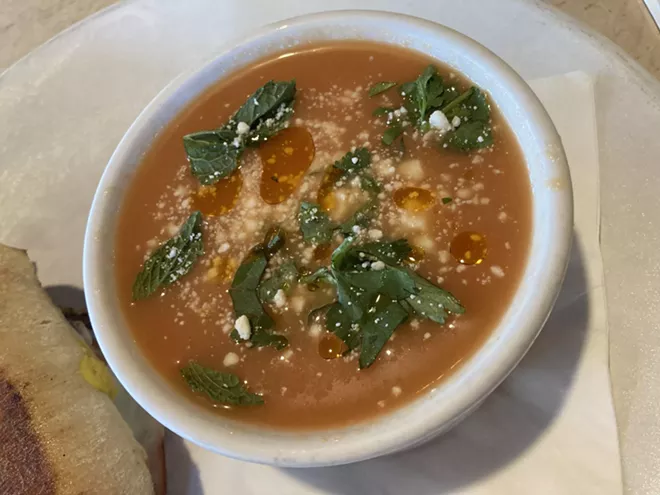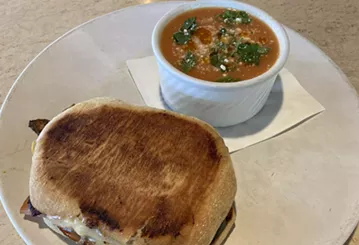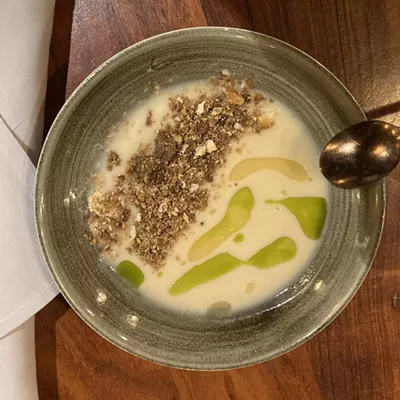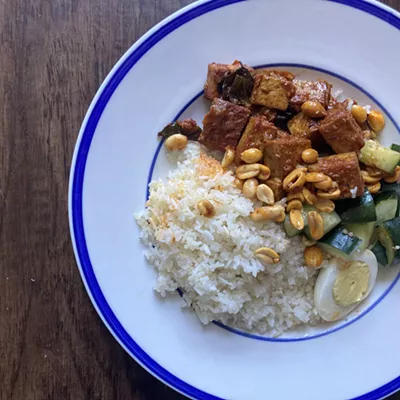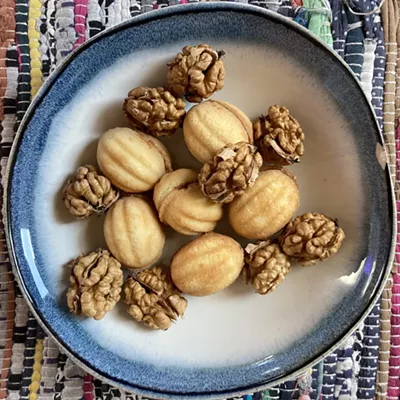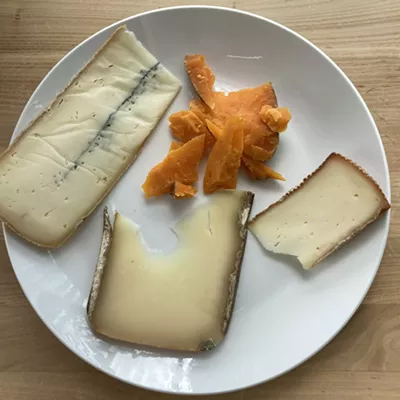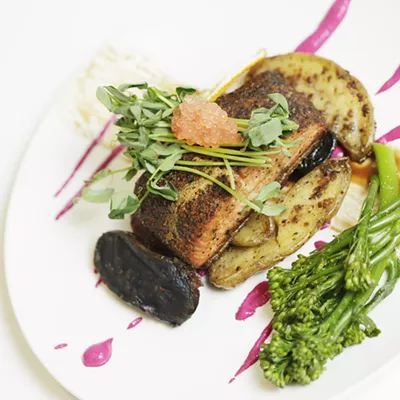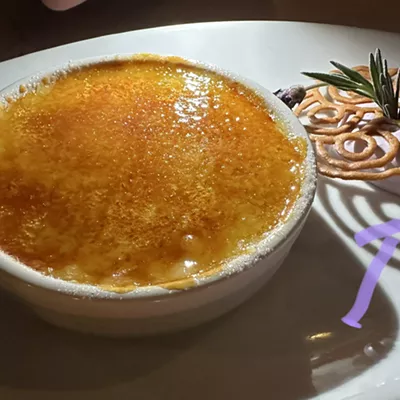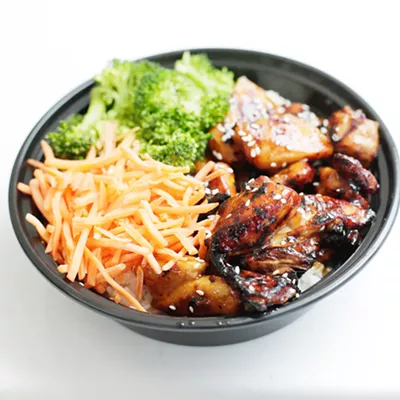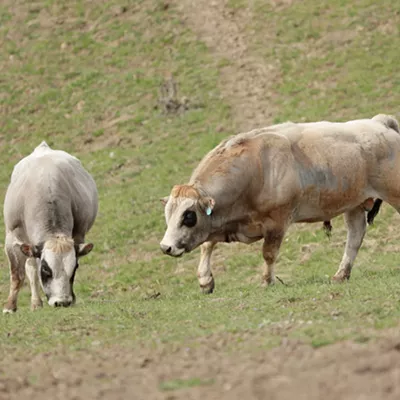Count of dishes/places: 43
Recently, a friend tried to convince me that there are only four categories of food in the whole world: steaks, sandwiches, soups and salads. I said he was crazy.
The argument lasted hours.
For example, he argued:
Pizza = sandwich (open-faced)
Cereal = soup (Lucky Charms in milk is the same as noodles in chicken broth)
An apple = steak (a slab of one consistent ingredient)
I'm still not completely persuaded. But today, our globetrotting journey takes us to the heart of this debate. I'm gonna dive into a dish that has divided the culinary world over whether it's a soup or salad. Proceed with caution, because it might get heated. The argument, I mean, not the soup.
Thankfully, though, the sandwich in today's installment is most definitely a sandwich.
GAZPACHO FROM ANDALUSIA
Last week, the chalkboard at Chowderhead announced to the lunch crowd that the Soup of the Day was Watermelon Gazpacho.
Soup: 1
Salad: 0
There's a joke among foodies about a customer repeatedly sending gazpacho back to the kitchen because it's cold. Gazpacho is supposed to be cold. Originally from the Andalusian region of southern Spain, it's served as a cool refreshment on hot, Mediterranean summer afternoons.
In its classic form, it's a light, savory blend of tomatoes, green peppers, cucumbers, onions, garlic, olive oil and vinegar, sometimes thickened with bread crumbs.
The name "gazpacho" is derived from the Arabic word for "soaked bread," dating the dish back at least to Moorish rule over Spain, which started in the year 711 and lasted until 1492. But whatever the first gazpacho was, it couldn't have been too similar to the modern version, since tomatoes, plants native to the New World, weren't brought to Spain until the 16th century.
But if the combination of tomatoes, cucumbers, oil and vinegar sounds like a salad to you, you're in good company. According to Encyclopedia Britannica, Spanish cookbooks usually classify gazpacho as a salad.
Soup: 1
Salad: 1
Whatever it is, gazpacho is a great way to feature summer produce. Its simple preparation (just blitz in the blender and you're good to go) makes it a prime vehicle for variations, such as adding watermelon.
Chowderhead isn't the first, nor the last, to add fruit to this savory, slurp-able salad. But they've hit just the right combination, which is what gazpacho is all about — it's basically a drill in balancing flavors, since there's no heat or texture to play with.
The sweet watermelon plays gently with the sweet and acidic tomato, all of which is balanced by just enough oil, garlic, and salty cheese for depth. Mint and cilantro on top add earthiness and gorgeous green to contrast the pink.
If you're worried about the sweet and savory combo, don't be — think about how well fruit and cheese, maple and bacon, or pork chops and applesauce go together.
Or, go a step further and reconsider what's actually sweet. Tomatoes and onions have such high sugar content that chefs usually use them to sweeten dishes. So maybe, adding tomatoes and watermelon and onions together is adding sweet on sweet on sweet.
Regardless, I'm not settling the soup versus salad debate. It's up to you if you think soup can be cold, or if you can sip salad with a spoon.
Whatever you decide, I do suggest snagging some gazpacho the next time you see it on a menu. Or, practice perfecting your own palate by blitzing together whatever fresh summer produce you have at home.
CUBAN SANDWICH FROM TAMPA, FLORIDA
Good news: the Cuban sandwich is definitely a sandwich.
Bad news: the Cuban sandwich is not from Cuba.
Well, sorta. According to The Cuban Sandwich: A History in Layers by Andrew Huse, Barbara Cruz and Jeff Houck, the Cuban sandwich was invented by Cuban immigrants in Tampa, Florida. Since the immigrants themselves were from Cuba, whether the sandwich is technically from Cuba or Florida seems like a gray area.
What's not a gray area is what makes a Cuban sandwich. Traditionally, ham, roast pork, swiss cheese, pickles and mustard are smashed between Cuban pan de agua, or water bread.
Cuban bread is skinny, two to three feet long, and often topped with a palmetto leaf to keep it from rising too much in the oven. It's crusty on the outside and super airy on the inside. It presses easily and helps give the Cuban sandwich its traditional flattened look.

The Cuban at Chowderhead uses telera, a Mexican bread typically used for sandwiches and tortas. It has a similar light, crusty texture that flattens very satisfyingly under a panini press or spatula.
Other restaurants in the area including Ruins, Kismet, Sandos, Zozo's Sandwich House and Billie's Diner have all offered tasty, mostly traditional versions of Cubans in the past. The new Cuban Way food truck probably has the most authentic option.
Chowderhead does take one liberty with the time-tested combo — they throw pork belly in with the rest of the classic ingredients. It's still in the vein of the ham/roast pork combo, so maybe the sandwich's inventors would let it slide. The thick pork belly adds some extra juiciness — a rich, drippy fat that makes the sharp yellow mustard even punchier.
There's a reason the soup/salad/sandwich pairing is the perfect lunch combo. And I'm here to suggest that we don't spend too much time defining categories. Whether you're using a fork, a spoon, or your hands, just enjoy your lunch. Save arguing for the dinner table. ♦
Have an idea for what I should eat next? Wanna make me a traditional dish from your hometown? Send 80 Plates tips and ideas to [email protected].

